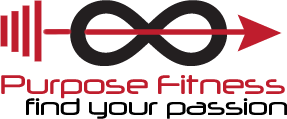
It’s a new year and with that comes new goals and aspirations for the year ahead. Many of us will start out with good intentions of how this year we are going to keep our goals and stay motivated enough to keep going long after the resolution glow has warn off. 80 % of people tend to fail at their resolutions by February. Don’t be discouraged, there are ways to help keep you going and make your goal a life changer.
Be Smart about your goals.
Try to think about this for a bit before moving on. Make sure your goal is something that fits into your life as it is right now. In order to keep your goals, you want to make it something that fits your lifestyle so it can become part of your existing life.
Make your goals Measurable.
Start with a goal that is measurable for a specific amount of time. Breaking up your goals into smaller time lines will make it easier to stay the course and make it a lifestyle and not just a temporary fix.
Choose Attainable goals.
Choose one goal at a time and make sure it is something that fits into your current timeline. If you are choosing a measurable goal for the next 6 weeks, make sure it is something that you can in fact attain in that 6 week time period. Goals too big in a shorter amount of time can lead to discouragement. Keeping your goals attainable will keep you from getting overwhelmed and throwing in the towel.
Choose Realistic goals.
Realistic goals will go hand in hand with making those same goals attainable. Being realistic with yourself from the start will make your goals feel much closer to you, rather than so far out of reach. Hard work is definitely part of all of this, but setting yourself up for disaster from the get-go and making completely unrealistic goals will not help the cause.
Start with Timely goals.
When you think about the year as a whole, it can be a little overwhelming. You may have one huge goal that you want to reach by the end of the year. Think about the steps you need to take in achieving that big goal. If it is something like, I want to live healthier, think about the steps you need to take to make this happen. Be proactive in adding one change in your routine at a time. Changing too much too quickly can sometimes lead to burn out.
In order to make this year successful, you need to remember that everything worth having will not come easy. Be prepared to put in the work. It’s okay if you stumble. Get up, dust yourself off and keep going. You got this!
